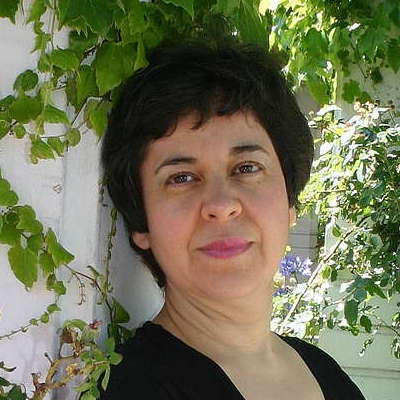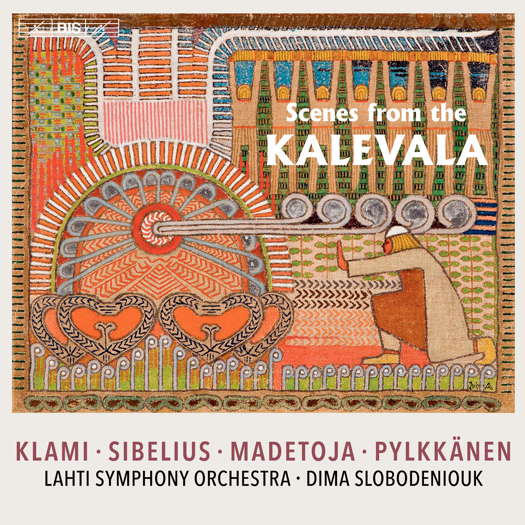 DISCUSSION: What is a work? John Dante Prevedini leads a discussion about The performing artist as co-creator, including contributions from Halida Dinova, Yekaterina Lebedeva, Béla Hartmann, David Arditti and Stephen Francis Vasta.
DISCUSSION: What is a work? John Dante Prevedini leads a discussion about The performing artist as co-creator, including contributions from Halida Dinova, Yekaterina Lebedeva, Béla Hartmann, David Arditti and Stephen Francis Vasta.
 SPONSORED: A Seasoned Champion of New Music. Argentinian-American pianist Mirian Conti in conversation with Andrew Schartmann.
SPONSORED: A Seasoned Champion of New Music. Argentinian-American pianist Mirian Conti in conversation with Andrew Schartmann.
All sponsored features >>

Finnish Magic and Mystery
Orchestral music inspired by the Kalevala impresses GERALD FENECH
'... spectacular stuff, full of vivid imagery and larger than life characters woven in a tapestry of harmonic splendour ...'
The Kalevala, Finland's national epic, is, what one might say, what Dante's Divine Comedy is to Italy. It is a vast collection of folk poetry from oral sung traditions gathered during a series of field trips in the 1830s by Elias Lonnrot (1802-1884), and published in its complete form in 1849. Organised into a series of fifty stories or runos, it tells of the creation of the world and its elements, of plants, creatures and humankind, of the adventures of gods, demigods and humans during the emergence of early Finnish society, of conflicts between peoples of Kalevala and Pohjola, and of fantastic beasts including giant pike, bears and eagles. Lonnrot's purpose was not merely to relate old tales, but to kindle a spirit of Finnish nationalism in his nineteenth century readers, which would eventually lead to Finnish independence from Russia in 1917.
Artists of all sorts were quick to take up the challenge in most art genres, but it was in music that the real successes came to pass. Fredrik Pacuis and Robert Kajanus, a zealous admirer and conductor of Sibelius's music, were among the first composers to be drawn to the Kalevala's heady mixture of ancient myth and romantic nationalism. But it was Jean Sibelius, with his huge 1892 choral symphony Kullervo, who really got the ball rolling. Indeed a string of Sibelius masterpieces, including the Lemminkainen Suite (1904), Pohjola's Daughter (1906), Luonnotar (1913) and Tapiola (1926), serve as eloquent testimony to the inspirational powers of the Kalevala verses.
Eventually other Finnish composers followed suit, but these were overshadowed by this Sibelian inheritance. This latest issue deserves a warm welcome, as it sheds light on three orchestral rarities by three of Sibelius's younger contemporaries: Leevi Madetoja (1887-1947), Uuno Klami (1900-1961) and Tauno Pylkkanen (1918-1980).
The programme gets underway with Madetoja's symphonic poem Kullervo (1913), named after one of the Kalevala's key human characters, a tragic, vengeful, quasi-Oedipal figure who sets out to get revenge on those who have wronged him, but who finally takes his own life. This is a gripping story, steeped in the dynamic late-Romanticism of Tchaikovsky, vibrantly scored with plenty of characterful music for woodwind and brass, and with expansive lyrical episodes offering a timely respite from the ongoing drama.
Listen — Leevi Madetoja: Kullervo
(BIS-2371 track 1, 0:01-0:53) ℗ 2021 BIS Records AB :
Klami's Kalevala Suite (1933-43) is a stunning piece in five movements that encapsulates the broad sweep of Lonnrot's epic, from 'The Creation of the Earth' (first movement) and of the plants, trees and elements (second and third movements) to the human drama of the young and roguish Lemminkainen as his body is cradled by his mother in 'Cradle Song' (fourth movement), which is dominated by a plaintive cry of a cor anglais. 'The Forging of the Sampo', a mysterious machine that brings its owner untold riches (fifth movement), has a machine-like pulse which leads to a glorious conclusion.
Listen — Uuno Klami: The Forging of the Sampo (Kalevala Suite)
(BIS-2371 track 6, 5:04-5:50) ℗ 2021 BIS Records AB :
The second movement of Sibelius's Lemminkainen Suite, 'Lemminkainen in Tuonela', is here presented in an unrecorded interim version that is considerably shorter than the 1896 version but still longer than the familiar revision of 1939. Tracing Lemminkainen's journey to the Underworld (Tuonela), his death and dismemberment, his discovery, patient piecing together and restoration to life by his mother, this is one of Sibelius's most impressive tone-paintings; indeed, the music's imagery is so powerful that one almost feels he is in Tuonela himself witnessing this transformation.
Listen — Sibelius: Lemminkäinen in Tuonela
(BIS-2371 track 7, 4:53-5:51) ℗ 2021 BIS Records AB :
Ending off proceedings is Pylkkanen's exciting piece Kullervo goes to War (1942). Best known today for his operas, Pylkkanen, like Klami, studied with Madetoja, and the music of this piece demonstrates a more direct line to his teacher's late Romanticism, but with a strong tinge of the last century. There is an urgency to this music that evokes its composition in a modern period of tragic conflict, but combined with a filmic command of pacing, drama and scene-suggestion that make it an ideal close to this absorbing programme.
Listen — Tauno Pylkkanen: Kullervo goes to War
(BIS-2371 track 8, 9:40-10:24) ℗ 2021 BIS Records AB :
This is spectacular stuff, full of vivid imagery and larger than life characters woven in a tapestry of harmonic splendour that makes for a most compelling issue of too-seldom-heard Finnish music. Superb sound and some marvellously evocative presentation complete an album brimming with the haunting sounds of a country that is full of magic and mystery.
Copyright © 18 January 2023
Gerald Fenech,
Gzira, Malta



